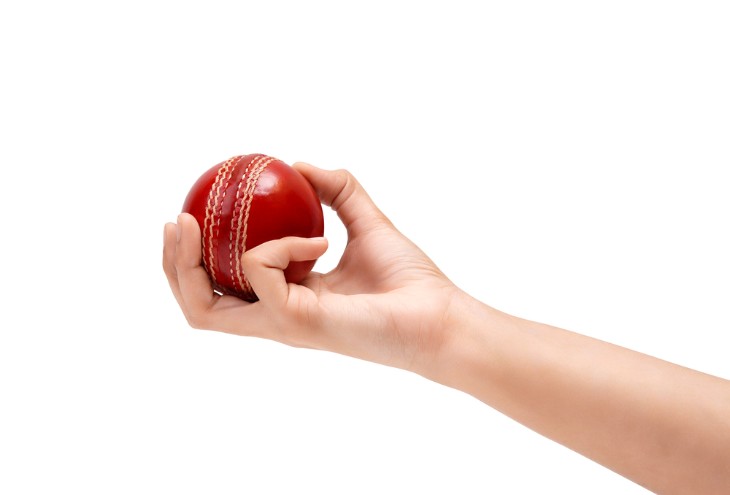- Materials and Maintenance: Preparing the Cricket Ball for Swing
- The Grip: How to Hold the Cricket Ball for Optimal Swing
- Bowling Techniques: Seam Position and Release for Swing
- Atmospheric Conditions and Their Effects on Swing Bowling
- Mastery Through Practice: Drills to Enhance Swing Techniques
- How to swing cricket ball: Mental Preparation for Bowlers
- Analysing the Opposition: Adapting Swing Tactics to Batsmen
- How to swing cricket ball: Advanced Techniques for Experienced Bowlers
- Contemporary Masters of Swing Bowling: A Study of the Greats
- Conclusion: The Subtle Art of Swing Bowling Mastery
Swing bowling is a critical skill in cricket that involves the movement of the ball through the air, deviating from a straight trajectory, which often confounds batsmen. The swing is produced by the asymmetry of the ball's surface, combined with the position of the seam and the velocity at which the ball is bowled. The physics at play includes aerodynamic principles where the air moves faster over one side of the ball than the other, creating a difference in pressure that causes the ball to swing towards the lower pressure side. This effect is heightened when one side of the ball is rougher than the other, thus offering varied resistance to the air flow.
Understanding how to swing cricket ball involves comprehension of the laminar and turbulent airflow around the ball. When the ball is new, the smooth surface conditions are conducive to laminar flow, leading to conventional swing. As the ball wears and one side becomes rougher, turbulent flow is generated, which can lead to reverse swing. The bowler's skill in manipulating these conditions can significantly affect the ball's movement and the game's outcome.
Materials and Maintenance: Preparing the Cricket Ball for Swing
To achieve the optimum swing, the condition of the cricket ball is paramount. Bowlers and fielding teams often work on the ball, polishing one side while allowing the other to become rough. This practice is an essential part of match strategy, as a well-maintained ball can maintain its swinging capability longer. The shiny side is polished using a player’s sweat and saliva, which not only gives it a smooth appearance but also creates the conditions for differential air resistance necessary for swing bowling. The legality of maintaining the ball is governed by cricket laws, and players must stay within these rules to avoid penalties.
The preparation for how to swing a cricket ball also extends to the cricket pitch itself. A dry, hard pitch can help to roughen up one side of the ball, contributing to the swing. Conversely, a soft, grassy pitch may not wear the ball as quickly, affecting the potential for swing. Bowlers must, therefore, be adept at maintaining the ball under varying conditions and understanding the complex interaction between the ball's maintenance and the environmental factors at play.
The Grip: How to Hold the Cricket Ball for Optimal Swing
The way a bowler grips the cricket ball is fundamental in executing an effective swing. For conventional swing, the ball is held with the seam angled towards the intended swing direction, allowing the airflow to interact with the seam and surface to facilitate movement. The index and middle fingers are positioned either side of the seam, with the thumb resting lightly on the seam at the bottom of the ball. Precision in finger placement can influence the degree and direction of swing, with subtle shifts making significant differences to the ball's path.
In the quest to master how to swing a cricket ball, bowlers must also focus on the grip's firmness. A relaxed grip, with the ball resting lightly in the fingers, can enhance the swing by allowing the ball to leave the hand with minimal friction, preserving the seam position that has been carefully set. In contrast, a tighter grip might be used when a bowler intends to cut or seam the ball, which requires a different type of delivery. Practice and experience enable bowlers to adjust their grip instinctively to the match situation.

Bowling Techniques: Seam Position and Release for Swing
Once the grip has been mastered, the bowler's focus shifts to the delivery technique, which is crucial for swing bowling. The seam of the ball should be positioned upright, pointing towards the slip fielders or gully to achieve out-swing. For in-swing, the seam is angled towards the leg side. This seam position, in combination with the bowler's action, determines the ball's trajectory after it leaves the hand. The bowler's wrist must be firm and behind the ball at the point of release, ensuring that the seam position is maintained through the air.
The release of the ball is a moment of critical importance. A smooth, high-arm action aids in imparting the energy and direction needed for swing. Consistency in the release point contributes to control over the swing, as varying this aspect can change the ball’s behaviour significantly. Skilled bowlers can manipulate their release, varying their pace and the point of release subtly to confuse batsmen, making it more challenging to predict the ball's movement. Mastery of seam position and release is thus a blend of art and technique, honed through diligent practice.
Atmospheric Conditions and Their Effects on Swing Bowling
Atmospheric conditions play a pivotal role in swing bowling, affecting how the cricket ball moves through the air. Humidity, temperature, wind, and even the cloud cover can influence the degree of swing a bowler can achieve. Overcast conditions with high humidity are traditionally believed to be conducive to swing, as the moisture in the air can increase the asymmetry in air pressure on either side of the ball. Conversely, dry and hot conditions might reduce the swing as the air is less dense, offering less resistance to the moving ball.
Understanding how to swing a cricket ball requires a bowler to adapt to these atmospheric variables. For instance, on humid days, bowlers may find more success in swinging the ball, both conventionally and in reverse. It is also worth noting that the wind can aid or hinder swing; a strong breeze can exaggerate the swing, while a headwind can slow the ball down, reducing its swing in the process. Therefore, bowlers need to assess the weather and adjust their techniques and strategies accordingly to maximise the potential for swing.
The state of the cricket pitch is another significant factor that can affect the swing of the ball. A pitch that is green and lush tends to assist fast bowlers with both swing and seam movement, as the grass can grip the ball and the moisture can help maintain one side shinier for longer. On the other hand, a dry, abrasive surface can expedite the roughening of one side of the ball, assisting in obtaining reverse swing, especially as the ball gets older.
Bowlers aiming to exploit the swing must be acutely aware of the pitch conditions before and during the game. While the initial condition of the pitch can give an indication of how the ball is likely to behave, the changing nature of the pitch over the course of a match also requires attention. A pitch that starts green may become progressively drier and more abrasive, which could transition the swing from conventional to reverse. Adapting the bowling strategy to the evolving pitch conditions is crucial for bowlers who wish to maintain an edge over the batsmen.
Mastery Through Practice: Drills to Enhance Swing Techniques
The adage 'practice makes perfect' is particularly pertinent when learning how to swing a cricket ball. Regular, focused practice allows bowlers to refine their grip, seam position, and release, which are vital components of swing bowling. Drills designed to enhance these skills often involve targeting specific areas on the pitch, working on maintaining the seam position during flight, and practising under varied atmospheric conditions to simulate match scenarios. Using video analysis to review technique and body alignment can provide valuable feedback for adjustment and improvement.
Moreover, bowlers can benefit from drills that focus on endurance and strength, particularly in the wrist and fingers, which play a crucial role in maintaining the ball's position at the time of release. Consistency in swing bowling also comes from muscle memory, which is developed through repetition. Therefore, structured practice sessions, including a range of exercises aimed at perfecting each aspect of swing bowling, are indispensable for any bowler looking to excel in this art.
How to swing cricket ball: Mental Preparation for Bowlers
Psychological preparedness is as crucial as physical skill in mastering how to swing a cricket ball effectively. The mental aspect of swing bowling encompasses focus, confidence, and the ability to handle pressure situations. Bowlers must develop the mental fortitude to stay composed when deliveries do not go as planned or when batsmen are on the offensive. A clear mind and a focused approach allow bowlers to make better decisions about line, length, and the type of swing to employ.
Furthermore, the psychological warfare between bowler and batsman is an intrinsic part of cricket. A bowler skilled in swing must be adept at reading a batsman's technique and mindset, using this insight to outthink the opponent. This involves setting up a batsman with a sequence of deliveries, creating uncertainty and drawing mistakes. Mental resilience, the ability to quickly recover from setbacks, and adaptability to changing game conditions are thus integral to the repertoire of a successful swing bowler.
Analysing the Opposition: Adapting Swing Tactics to Batsmen
A bowler's strategy in swing bowling must be tailored to the strengths and weaknesses of the opposition batsmen. This requires meticulous analysis of their techniques and preferences. Some batsmen may struggle against the in-swing, while others might find it challenging to handle the out-swing. Observing and understanding these tendencies allows a bowler to exploit them, by adjusting the line, length, and swing type accordingly. For instance, a batsman uncomfortable with the ball moving away might be set up with a series of in-swinging deliveries before being dismissed with an out-swinger.
Beyond individual batsmen, team analysis can reveal patterns in how a batting line-up may approach a swing bowler. Teams may have varying levels of proficiency in handling swing bowling, and conditions such as the match format, score, and time of day can also influence a batsman's approach. Adapting swing tactics requires a bowler to be observant, analytical, and flexible, ready to modify their plan based on the evolving dynamics of the game.

How to swing cricket ball: Advanced Techniques for Experienced Bowlers
Reverse swing, a more advanced form of swing bowling, occurs when the ball moves in the opposite direction to what is expected from the conventional swing. This typically happens in the later stages of the ball's life when one side is significantly more worn than the other. The rough side creates more air resistance, causing the ball to swing towards the shiny side. Mastering reverse swing requires a bowler to have an excellent grasp of the basics of swing bowling and then adapt their skills for this more complex movement.
The key to effective reverse swing is speed. It is generally agreed that the ball needs to be delivered at higher velocities for reverse swing to come into effect, often in excess of 85 mph (137 km/h). Along with speed, the precise maintenance of the ball and a subtle change in the grip and release can help in achieving reverse swing. Experienced bowlers use reverse swing as a potent weapon, particularly in Test cricket, where the ability to move an older ball can lead to breakthroughs during a long innings.
Contemporary Masters of Swing Bowling: A Study of the Greats
The art of swing bowling has been mastered by a select few practitioners who have left an indelible mark on the game of cricket. These bowlers have displayed a combination of skill, finesse, and a deep understanding of the mechanics and conditions that facilitate swing. By studying their techniques, upcoming bowlers can learn about wrist positions, seam manipulation, and the subtle variations in line and length that can deceive batsmen. Contemporary masters have also shown how to adapt their swing bowling to different formats of the game, from the prolonged spells in Test matches to the shorter, more aggressive stints in One-Day Internationals and T20s.
These elite players often share a common trait: the ability to consistently swing the ball late. Late swing, particularly challenging for batsmen to counter, requires the ball to maintain its course before deviating sharply near the point of delivery. This skill is honed through years of experience and an innate sense of timing and execution. Observing these masters at work provides invaluable lessons for any cricketer looking to enhance their swing bowling repertoire.
Conclusion: The Subtle Art of Swing Bowling Mastery
In conclusion, the mastery of swing bowling is a fine balance between science and art. It demands a thorough understanding of the ball's mechanics, the influence of atmospheric and pitch conditions, and a rigorous practice regime. Bowlers who excel in swing bowling possess not only the technical skills but also the psychological edge to exploit the batsman's vulnerabilities. As shown by the greats of the game, achieving proficiency in swing bowling can be a defining trait of a cricketer's career, and its mastery remains one of the most revered skills in the cricketing fraternity.
For more information:


